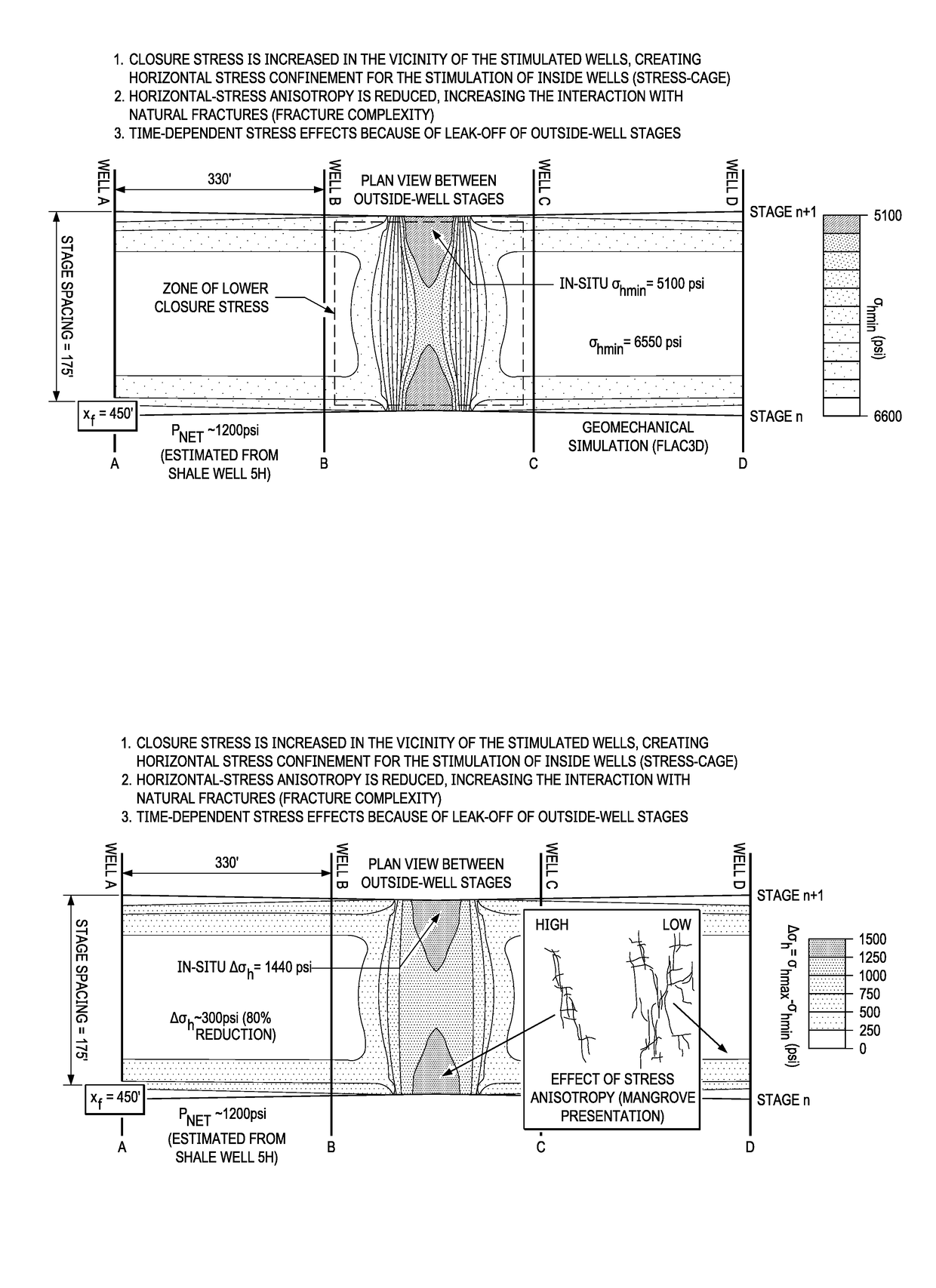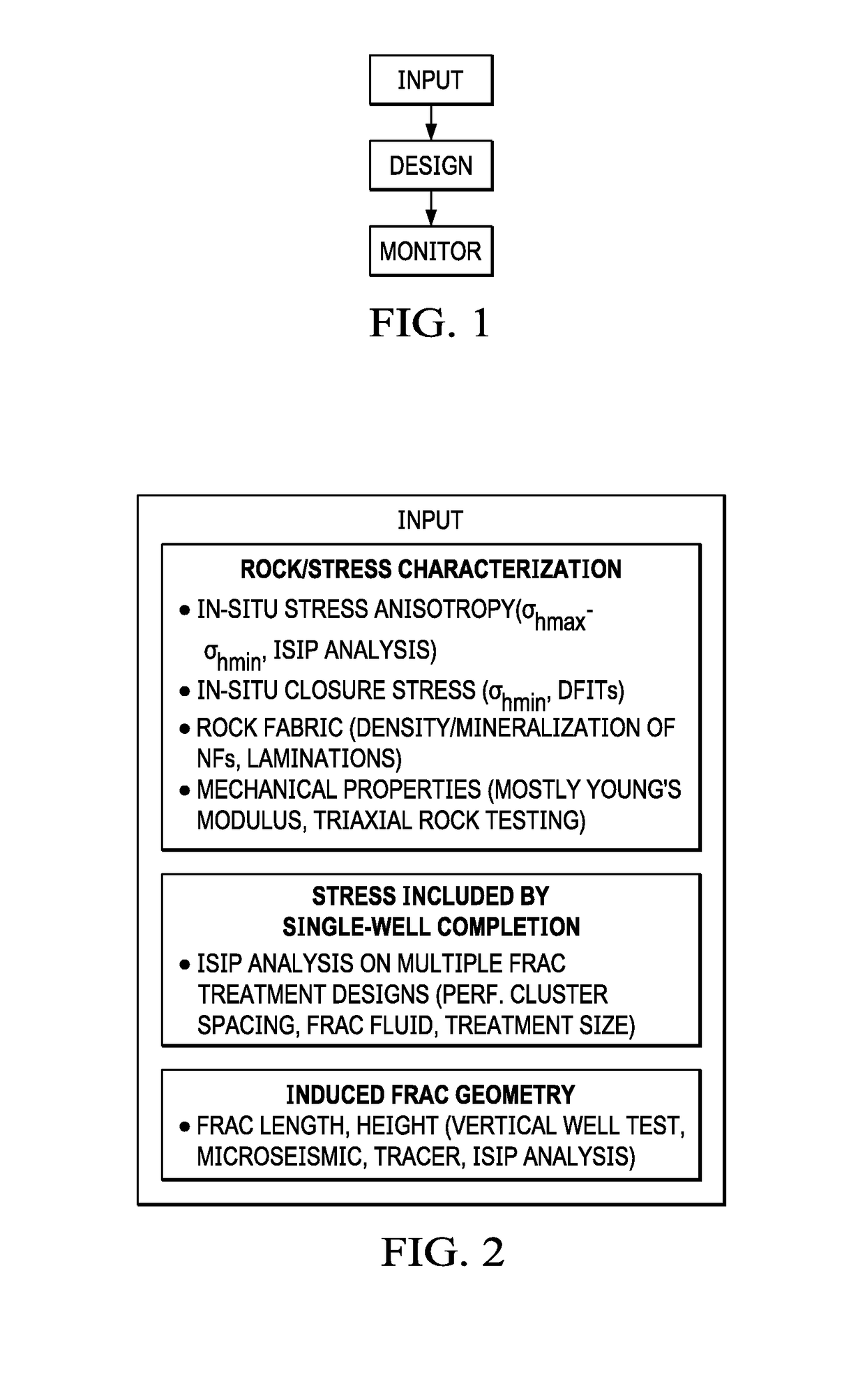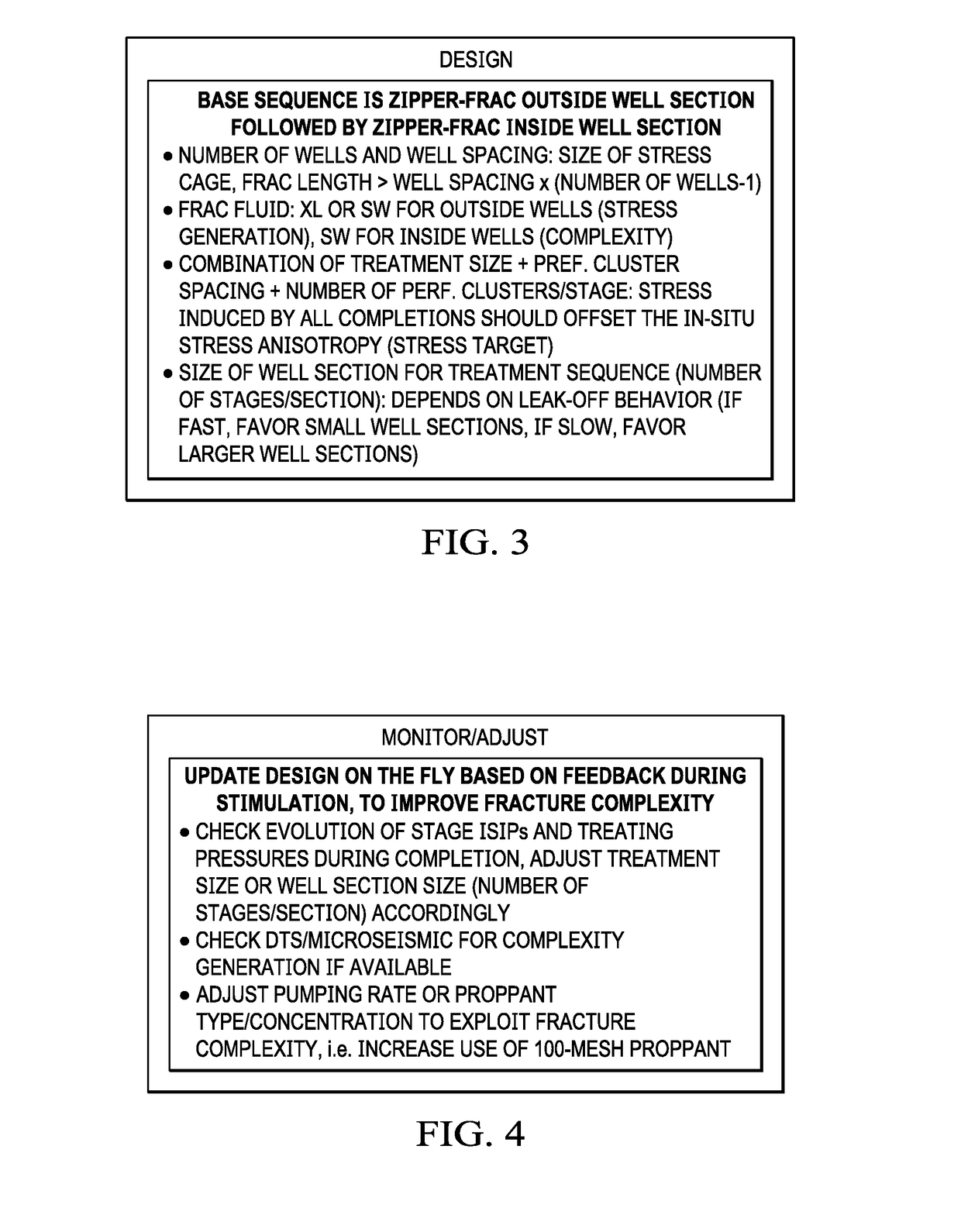Engineered stress state with multi-well completions
a stress state and multi-well technology, applied in the direction of earthwork drilling, fluid removal, borehole/well accessories, etc., can solve the problems of inordinate time needed to drain a field, uneconomic development, and high cost, so as to and reduce the cost of development.
- Summary
- Abstract
- Description
- Claims
- Application Information
AI Technical Summary
Benefits of technology
Problems solved by technology
Method used
Image
Examples
Embodiment Construction
[0105]During hydraulic fracture propagation, three regions may be identified from the pressure response and are referred to as: 1) near-well, that extends tens of inches; 2) mid-field, that extends tens of feet; and 3) far-field, that extends hundreds of feet from the wellbore. Each region can experience simple, tortuous, and complex fracture behavior creating unique pressure signatures.
[0106]For decades the oil industry has struggled to overcome near-wellbore fracture complexity during fracturing treatments, particularly in low-permeability, naturally fractured hard-rock reservoirs, because complexity near the wellbore reduces penetration of the fracture deeper into the reservoir. Yet at the same time, complexity is desired further away from the wellbore in order to sufficiently increase contact and drainage. A number of techniques have been created to diagnose and remediate these conditions to enable extension of created fractures and successful placement of proppant deep in the r...
PUM
 Login to View More
Login to View More Abstract
Description
Claims
Application Information
 Login to View More
Login to View More - R&D
- Intellectual Property
- Life Sciences
- Materials
- Tech Scout
- Unparalleled Data Quality
- Higher Quality Content
- 60% Fewer Hallucinations
Browse by: Latest US Patents, China's latest patents, Technical Efficacy Thesaurus, Application Domain, Technology Topic, Popular Technical Reports.
© 2025 PatSnap. All rights reserved.Legal|Privacy policy|Modern Slavery Act Transparency Statement|Sitemap|About US| Contact US: help@patsnap.com



